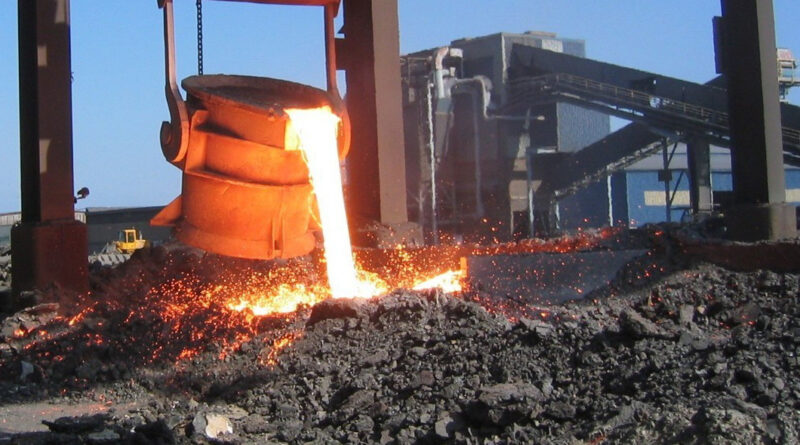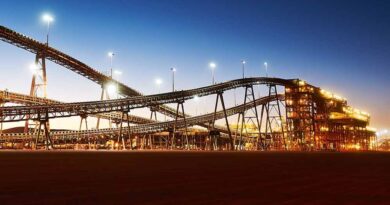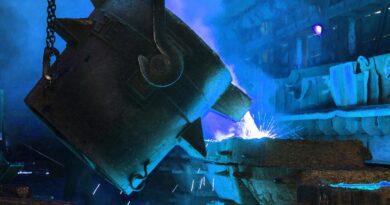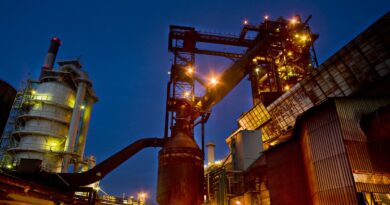FeCr production suffers due to unrestricted exports of chrome ore
The increasing and unrestricted exports of chrome ore from South Africa is contributing to the displacement of ferrochrome volumes from South Africa, warns Merafe.
The ISO standard defines ferrochromium (ferrochrome) as a master alloy of iron and chromium with a minimum chromium content of 45,0 % by mass, and a maximum chromium content of 95,0 % by mass, obtained by reduction from the corresponding raw materials or their concentrates.
In May, China’s leading stainless steel producer, Tsingshan Group, has raised its ferro-chrome price by $70 per tonne for June delivery due to supply shortage of chrome ore and charge chrome imported from South Africa. The shortage was created by the measures used to try to control the outbreak of Covid-19 in the African country. The June high-carbon ferro-chrome tender price was set $900 per tonne.
Major Chinese stainless steel producers lowered their July high-carbon ferrochrome tender prices to $862 per tonne. The continuing supply shortage of ore and alloy from South Africa could limit the price downtrend in the near term, experts in China said recently.
Challenges faced by South African ferrochrome producers:
• Increasing production costs – electricity – labour
• Socio-political challenges
• Legislative uncertainty
• Commodity prices and demand
• Chrome ore exports
• Electricity supply
• Logistics
Key statistics for 2019
• Global ferrochrome production increased from 13.6 million tonnes in 2018 to approximately 14 million tonnes in 2019.
• Ferrochrome demand increased from 13.3 million tonnes in 2018 to 13.7 million in 2019.
• South Africa produced approximately 3.6 million tonnes of ferrochrome in 2019 (2018: 3.9MT).
• China imported approximately 79% of its chrome ore in 2019, from South Africa (2018: 76%)
Over 75% of the world’s chrome reserves are in South Africa. South African chrome industry provides approximately 200 000 direct and indirect jobs. Around 35% of the world’s ferrochrome production of 13.7 mt was supplied by South Africa in 2019.
Ferrochrome role in stainless steel
Produced by high-temperature reduction (smelting) of chromite, ferrochrome contains iron, chrome, minor amounts of carbon and silicon, and impurities such as sulphur, phosphorous and titanium. Chrome brings critical properties to the metals with which it is alloyed. Add it to carbon steel in the form of ferrochrome and the steel becomes ‘stainless’ – corrosion-resistant, mechanically strong, heat resistant, hard wearing and shiny.
Stainless steel is used almost everywhere in modern life from nuclear reactors to exhaust pipes, architecture, kitchenware and a host of other applications.
Specialty steels produced for applications such as tools, injection moulds, camshafts, etc also derive the high mechanical strength, hardness and heat-resistance required from their chrome content.
Stainless steel production is expected to grow by 3.2% in 2020, however, both chrome and ferrochrome prices are expected to remain under pressure in the short term due to oversupply.
The growth forecasted does not factor in the possible impact of COVID-19 (Coronavirus) and load shedding which is expected to last for 18 to 24 months.
Ferrochrome production
Ferrochrome production is essentially a carbothermic reduction operation taking place at high temperatures. Chrome Ore (an oxide of chromium and iron, chromite) is reduced by coal and coke to form the iron-chromium alloy.
The heat for this reaction can come from several forms, but typically from the electric arc formed between the tips of the electrodes in the bottom of the furnace and the furnace hearth. This arc creates temperatures of about 2,800 °C (5,070 °F).
In the process of smelting, huge amounts of electricity are consumed, making production in countries with high power cost very expensive. This has recently been the case in South Africa as demonstrated recently by the closure of ferrochrome smelters operated by Glencore/Merafe jont Venture.
Tapping of the material from the furnace takes place intermittently. When enough smelted ferrochrome has accumulated in the hearth of the furnace, the tap hole is drilled open and a stream of molten metal and slag rushes down a trough into a chill or ladle. The ferrochrome solidifies in large castings, which are crushed for sale or further processed.
Ferrochrome is often classified by the amount of carbon and chrome it contains. The vast majority of FeCr produced is charge chrome from Southern Africa. With high carbon being the second largest segment followed by the smaller sectors of low carbon and intermediate carbon material.




